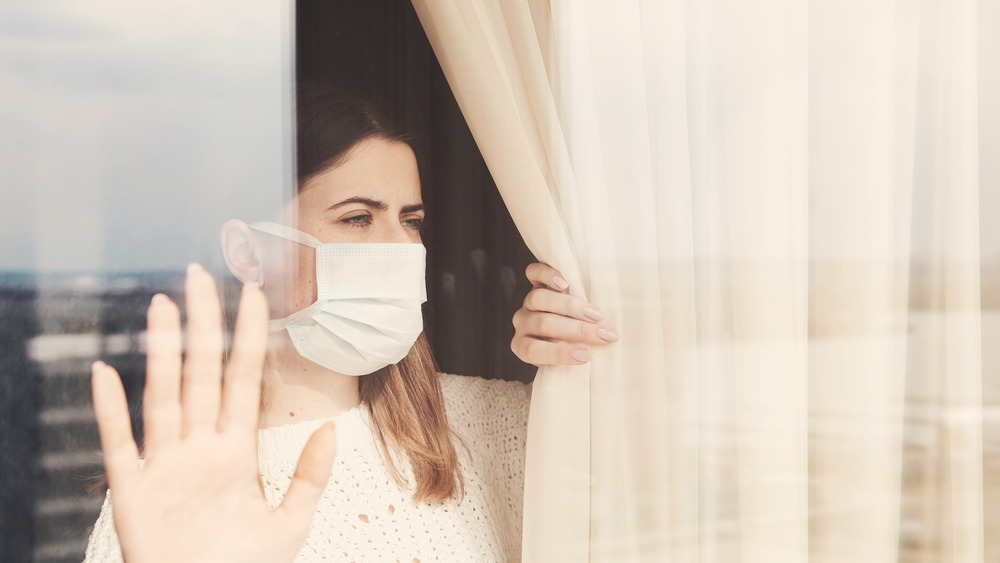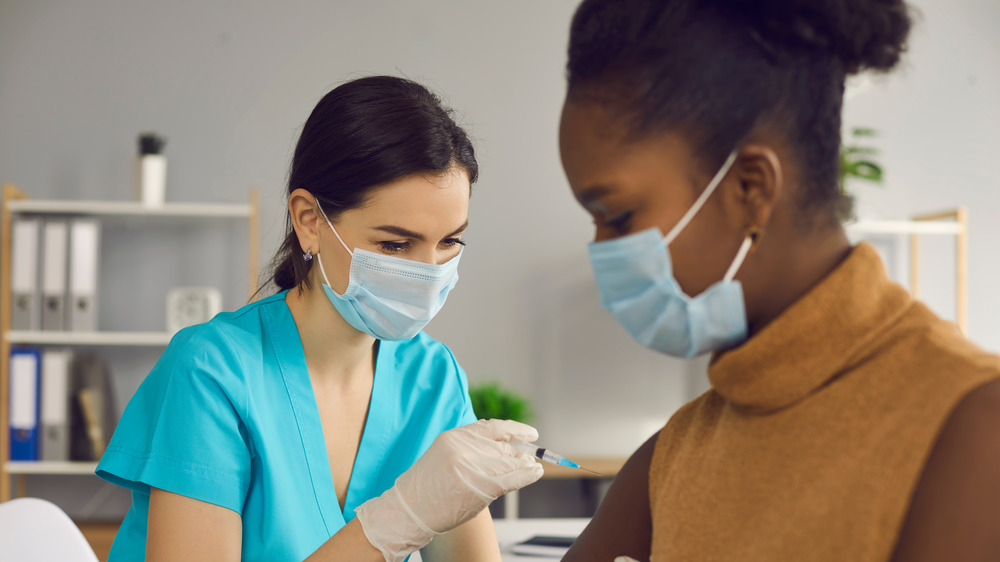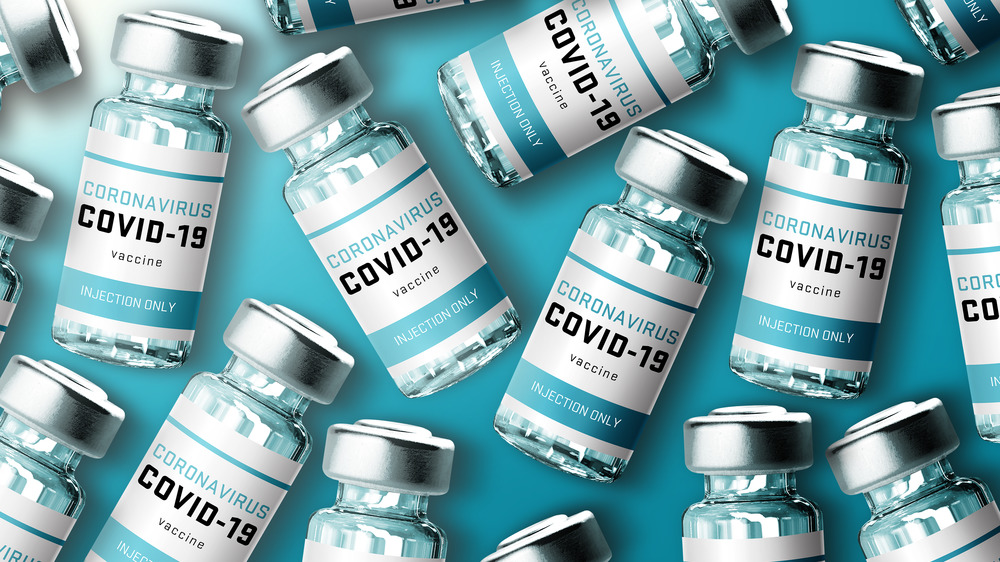Why A Mild Case Of COVID Is Still A Win, According To Experts
On the battlefield with COVID-19, we currently have three vaccines to thwart the viral enemy. The first to be approved, in mid-December, is manufactured by Pfizer; the second, authorized for use just one week later, is from Moderna (per Nature); and the third, from Johnson & Johnson, was shipped out for immediate use on March 1st (per NPR).
While the efficacy rates of the first two vaccines are at 95 and 94 percent, respectively, for the Johnson & Johnson vaccine, it is at 72 percent, according to The New York Times. It certainly sounds impressive for Pfizer and Moderna, but not so much for Johnson & Johnson (J&J). Indeed, it's being reported that many Americans fear getting the J&J vaccine is not worth it, as it's not as effective as the first two.
However, looking further into those efficacy rates reveals that the J&J vaccine is still a viable option, say the experts. The numbers quoted above equal what percentage of all COVID-19 infections the vaccine can prevent. Totally preventing infection is, of course, the goal, but even minimizing the lethality of the virus is valuable. In research trials with all three vaccines, none of the participants given a vaccine died, and none developed symptoms serious enough for hospitalization after the vaccine had reached full effect.
Even against COVID-19 variants, the vaccine prevails
Experts do acknowledge that the J&J vaccine may allow more people to come down with a mild case of COVID-19. Dr. Robert Wachter, chair of the department of medicine at the University of California, San Francisco, told The New York Times that what's more important, however, is whether or not someone will get really sick and die. With any of the three vaccines, he says, "There's essentially no chance you will die of COVID."
Still, the efficacy rate of the J&J vaccine preventing all COVID-19 infections is lower than those of the other vaccines. A reason for this is the J&J vaccine was tested globally and after the emergence of multiple COVID variants (Pfizer's and Moderna's trials were conducted mainly in the United States before the variants spread), according to Reuters. In South Africa, where a more deadly variant of COVID-19 was taking hold, the efficacy rate of the vaccine was 57 percent. That rate, as well as the 66 percent efficacy rate in Latin America, decreased the overall effectiveness percentage of the vaccine.
However, J&J's main goal was to prevent moderate to severe COVID-19 infections, and its vaccine was 85 percent effective in preventing hospitalization, even in cases due to a variant, 28 days after immunization.
One shot or two?
Both Pfizer's and Moderna's vaccines are given in two shots. J&J's is one shot. That was decided because testing showed J&J's vaccine to be more potent, delivering higher levels of immunity after one shot, while the other two vaccines required boosters to reach a similar effect.
Some people may be hesitant to get the J&J vaccine simply because it's just one shot — therefore thought to be not as effective. But all three vaccines are similar in that they appear to offer significant protection against infection after one shot and that they all may be improved by giving a second shot. Time and data will tell if a booster shot is necessary for the J&J vaccine.
But in the meantime, if your turn comes up to receive a vaccine, don't worry about the manufacturer. Keep in mind that COVID-19 has killed 15 times as many Americans as an average flu season. With J&J's vaccine providing 85 percent protection against severe disease, it "will potentially protect hundreds of millions of people from serious and fatal outcomes of COVID-19," says Dr. Paul Stoffels, J&J's chief scientific officer. So even though there might be a higher risk of getting a mild case of COVID-19 with the J&J vaccine, stick out your arm and take the shot. You'll still win.



